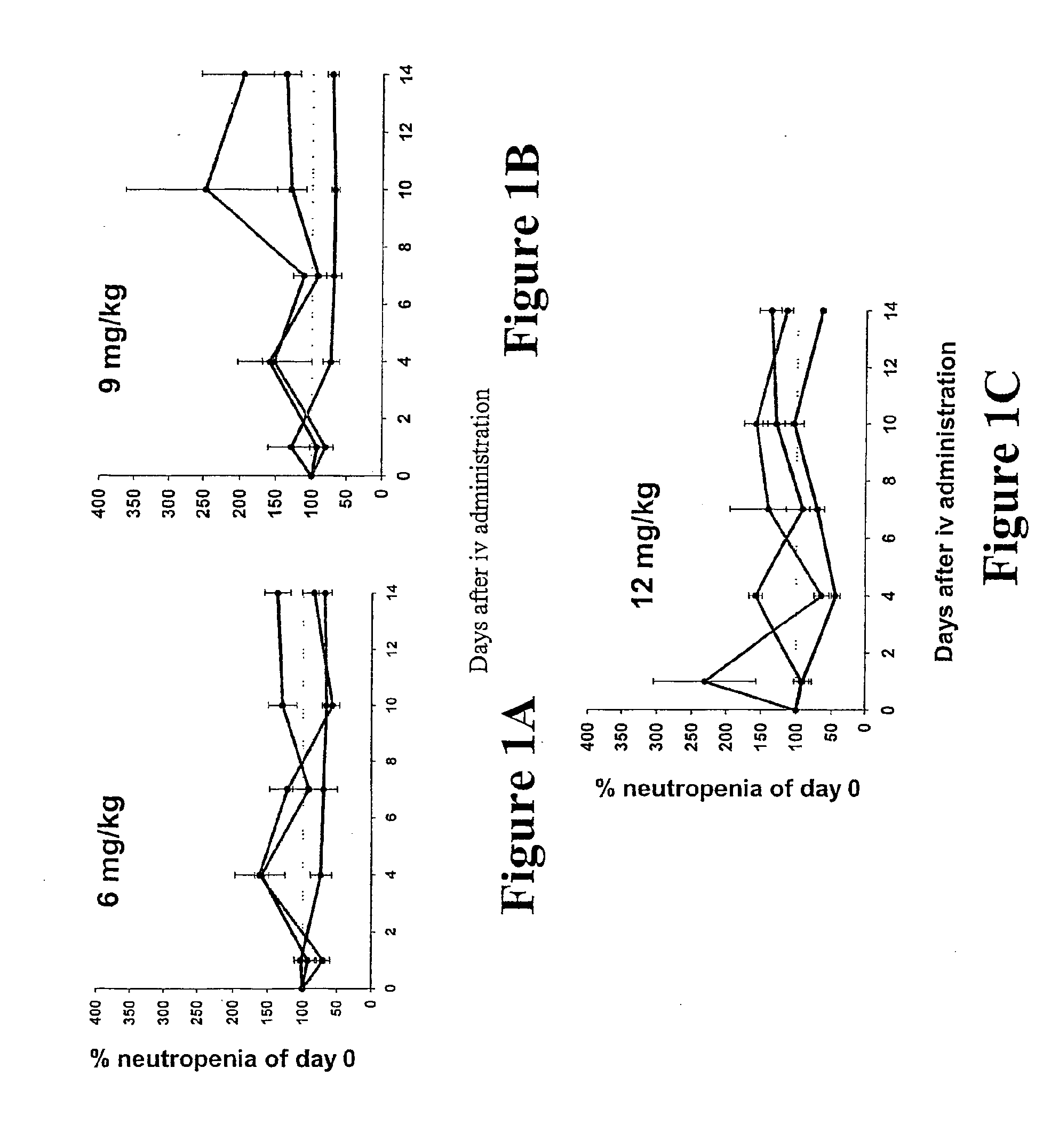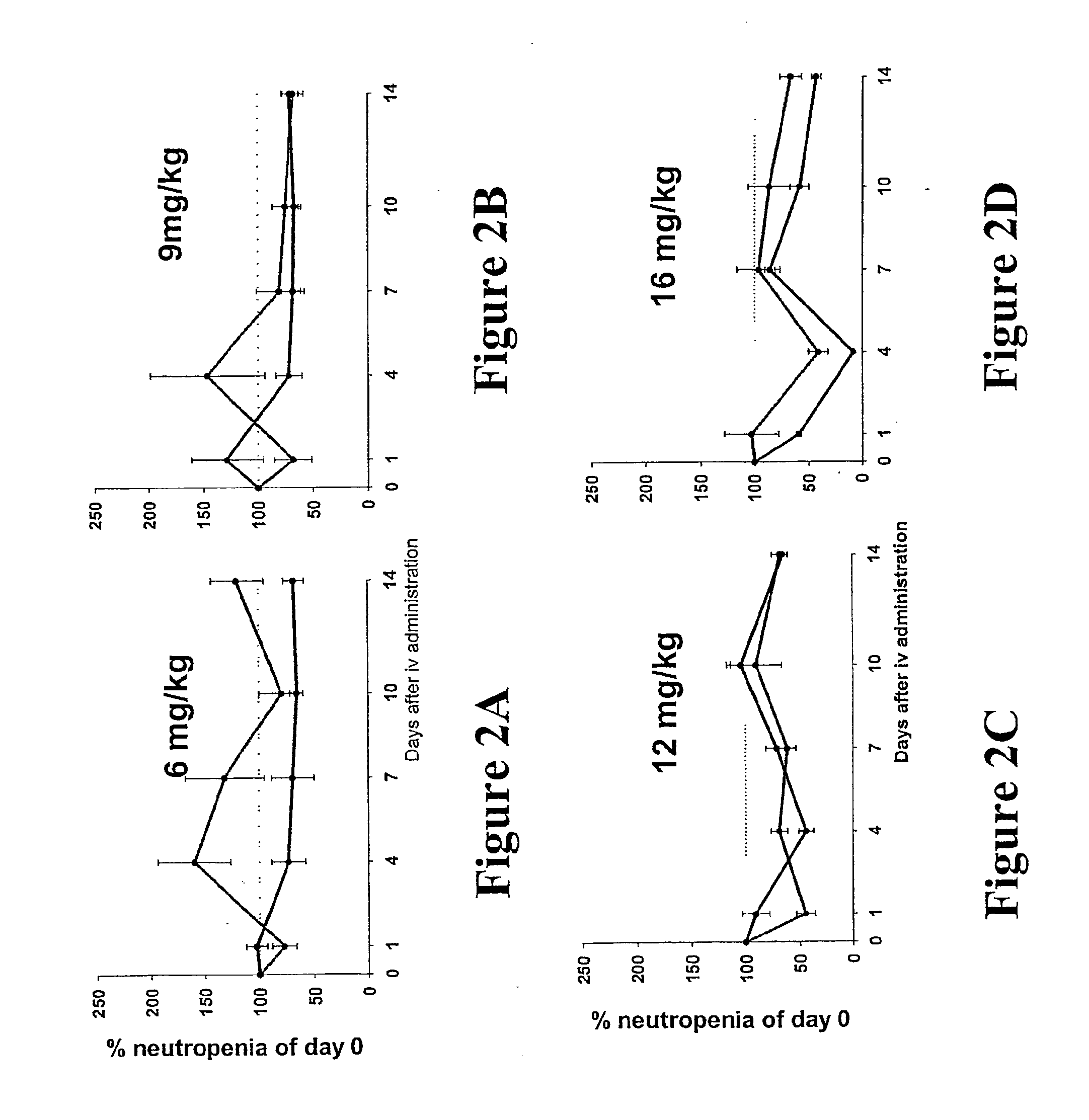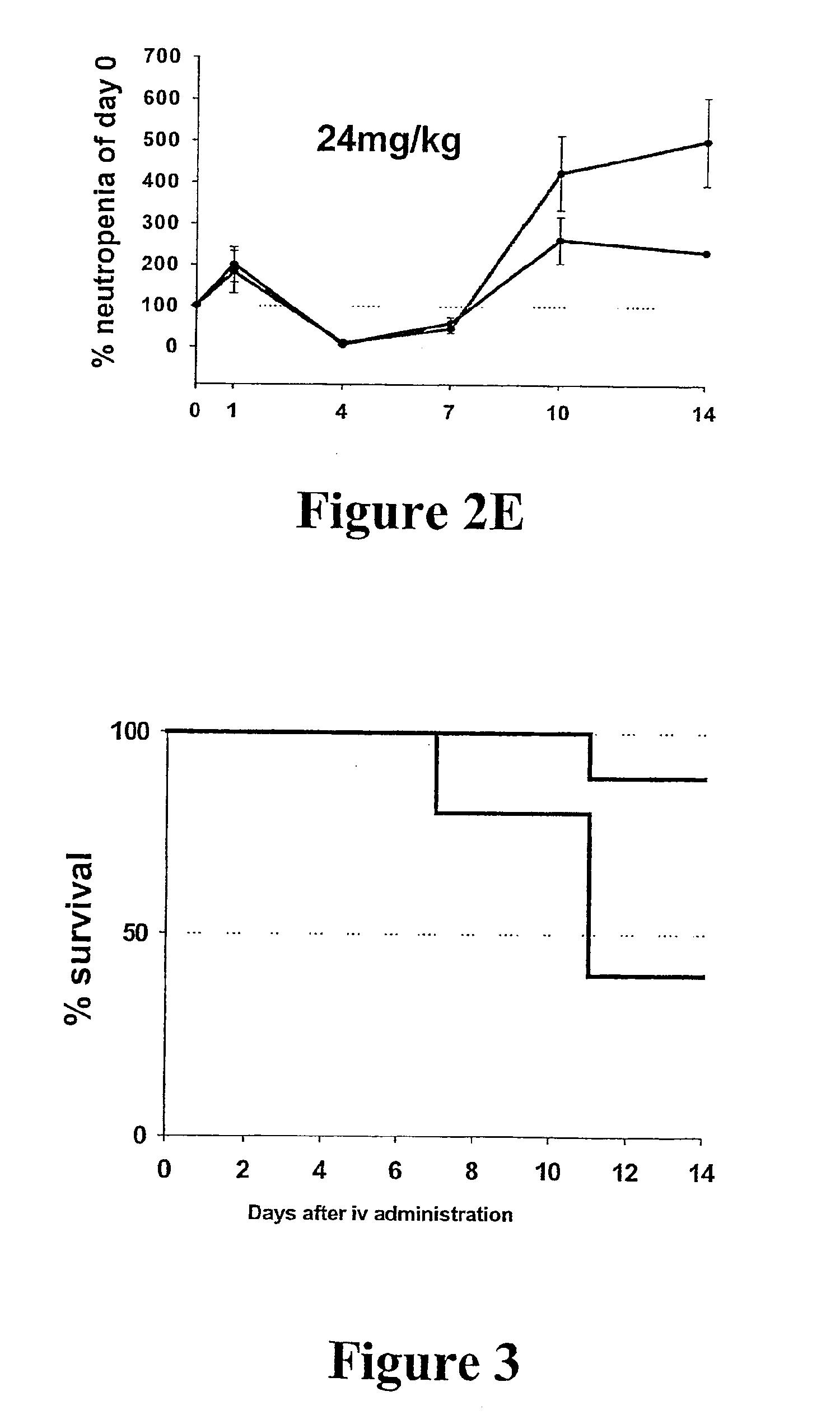Therapeutic protocols
a technology of therapeutic protocols and protocols, applied in the field of chemotherapy of diseases, can solve the problems of subject's condition deteriorating, concomitant unwanted effect on normal cells, and death of many of normal cells as well
- Summary
- Abstract
- Description
- Claims
- Application Information
AI Technical Summary
Benefits of technology
Problems solved by technology
Method used
Image
Examples
example 1
In vivo Model of Cytotoxicity (I)
[0064]Drugs for Intravenous Injection
[0065]The anti-cancer drug, doxorubicin (Adriamycin), hereinafter referred to as “Dox”, was purchased from Asta Medical (NSW, Australia) in syringes, each containing 2.5 mL at a final concentration of 2 mg / mL or as doxorubicin hydrochloride powder which was reconstituted in 0.9% sterile sodium chloride to a fmal concentration of 2 mg / mnL. Desiccated hyaluronan (HA), 824,000 KDa, was purchased from Pearce Pharmaceuticals (Victoria, Australia) and was dissolved in sterile water to a final concentration of 10 mg / mL, filter sterilized through a 0.22 μm filter, and stored at 4° C. until used. Hyaluronan mixed with doxorubicin (hereinafter referred to as “HyDox”) was prepared by mixing calculated volumes of 10 mg / mL hyaluronan with a calculated volume 0.5 mg / mL Dox with to achieve the desired dosages of doxorubicin. The dosage of HA used throughout this study was 13.3 mg / kg of bodyweight. The dosages of Dox studied were...
example 2
In vivo Model of Cardiotoxicity (I)
[0091]Experimental Animals
[0092]Adult female Wistar rats (10 weeks old) were purchased from The Animal Central Division (Monash University, Victoria, Australia) and were randomly divided into 6 experimental groups (n=8 per treatment group). Group 1 through to 3 received weekly intravenous injections of: (1) 1.5 mg / kg Dox only; (2) HA administered 30 minutes before 1.5 mg / kg Dox; and (3) 1.5 mg / kg HyDox. Group 4 through to 5 received weekly intravenous injections of comparable volumes of saline and 13.3 mg / kg HA, respectively. Group 6 received no treatment.
[0093]Prior to the commencement of the study, blood (500 μL) was collected from each rat via a tail vein bleed procedure. Blood was collected in 1.5 mL Capiject tube and allowed to clot for a minimum of 30 minutes. After this time, the clot was pelleted by centrifugation at 3,500 gav for 2 minutes and the serum was transferred to a clean 1.5 mL Eppendorf and immediately stored at −20° C. until fur...
example 3
[0107]In vivo Model of Cytotoxicity (II)
[0108]Experimental Animals
[0109]Male F1 mice (C57×CBA, 11-13 weeks old) were obtained from The Animal Central Division (Monash University, Victoria, Australia). For each treatment dosage a total of 6 groups (n=8 mice per group) were used. Data from each treatment group were established by staggering results of groups of 6 (counted individually), sampling each group every 4 days so that a daily assessment could be established. Each group was treated as described above, prior to the drug administration. -Throughout this study, blood was collected and analyzed for neutrophil content as outlined in previous examples. At the end point, all animals were humanely sacrificed and body organs fixed in 10% v / v formalin in PBS.
[0110]Hematological Determinations
[0111]This study focused on the two dosages of 12 mg / kg Dox and 16 mg / kg Dox that are the human therapeutic equivalents of 60 and 80 mg / m2, respectively. Again, to normalize the data for comparison ...
PUM
| Property | Measurement | Unit |
|---|---|---|
| weight | aaaaa | aaaaa |
| metabolic stress | aaaaa | aaaaa |
| metabolic stress | aaaaa | aaaaa |
Abstract
Description
Claims
Application Information
 Login to View More
Login to View More - R&D
- Intellectual Property
- Life Sciences
- Materials
- Tech Scout
- Unparalleled Data Quality
- Higher Quality Content
- 60% Fewer Hallucinations
Browse by: Latest US Patents, China's latest patents, Technical Efficacy Thesaurus, Application Domain, Technology Topic, Popular Technical Reports.
© 2025 PatSnap. All rights reserved.Legal|Privacy policy|Modern Slavery Act Transparency Statement|Sitemap|About US| Contact US: help@patsnap.com



